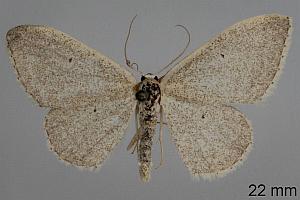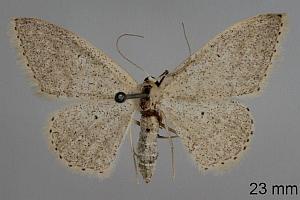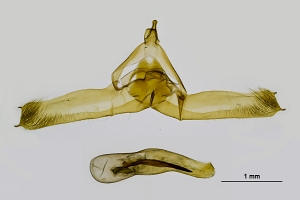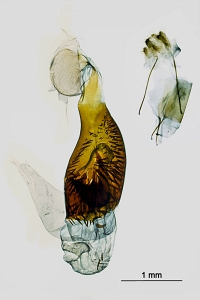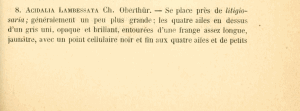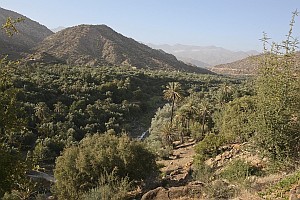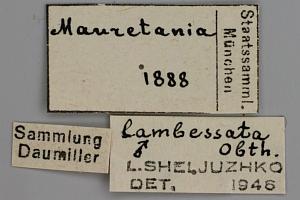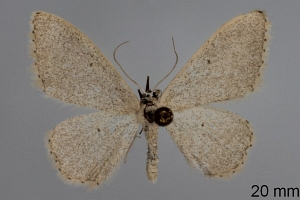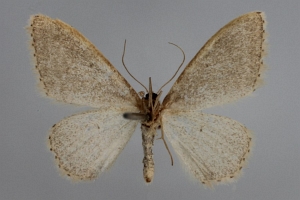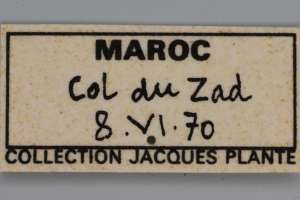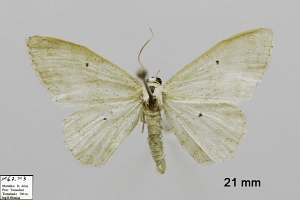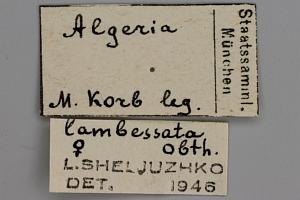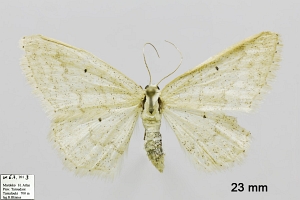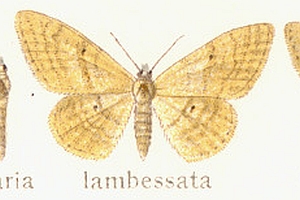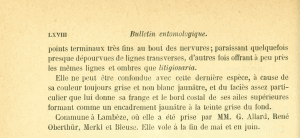In Europa fehlend (1 wahrscheinliche Fehletikettierung betrifft Spanien)!
Inhalt
2. Diagnose
2.1. Männchen
1-5: zwei ♂♂, Daten siehe Etiketten (fot.: Michel Kettner), coll. ZSM
6: ♂, Marokko, Hoher Atlas, Provinz Taroudant, Tamaloukt, 700 m, leg. Rolf Bläsius 6. Juli 2013 (det. & fot.: Harald Lahm)Forum
2.2. Weibchen
1-2: ♀, Algerien, Daten siehe Etiketten (fot.: Michel Kettner), coll. ZSM
3: ♀, Marokko, Hoher Atlas, Provinz Taroudant, Tamaloukt, 700 m, leg. Rolf Bläsius 6. Juli 2013 (det. & fot.: Harald Lahm)Forum
2.3. Genitalien
2.3.1. Männchen
2.3.2. Weibchen
1: Seitz (Hrsg.) (1909-1914: pl. 4b) [Reproduktion: Michel Kettner nach Exemplar in seinem Besitz]
2.4. Erstbeschreibung
1-2: Oberthür in Simon (1887: LXVII-LXVIII) [nach Copyright-freien Scans auf www.biodiversitylibrary.org]
3. Biologie
3.1. Habitat
1: Talgrund mit relativ dichter Vegetation (Oliven- und Mandelbäume, kleine Getreidefelder und Gärten), Marokko, Hoher Atlas, Oued oberhalb Tamaloukt, 600 m, 30° 39' N 8° 48' E, 22. Mai 2014 (Foto: Axel Steiner)Forum
4. Weitere Informationen
4.1. Andere Kombinationen
- Acidalia lambessata Oberthür, 1887 [Originalkombination]
4.2. Synonyme
- Acidalia granadaria Staudinger, 1901
4.3. Faunistik
Die Art ist in Nordafrika von Marokko bis Tunesien verbreitet. Nach Hausmann (2004: 56-58) gibt es ein Belegtier aus der Sierra de Gredos in Zentralspanien, das aber wahrscheinlich fehletikettiert ist. Die Art wird in Europa (Spanien) ganz durch die Schwesterart Idaea lusohispanica ersetzt.
(Autor: Erwin Rennwald)
4.4. Literatur
- Hausmann, A. (2004): The Geometrid Moths of Europe Volume 2: Sterrhinae: 1-600. Stenstrup (Apollo Books).
- Seitz, A. (Hrsg.) (1909-1914). Die Gross-Schmetterlinge der Erde. Band 4: I-V, 1-479, I-IV, pl. 1-25. Stuttgart (Alfred Kernen Verlag).
- Erstbeschreibung: Simon, E. [Prés.] (1887): Séance du 13 avril 1887. — Bulletin des séances et bulletin bibliographique de la Société entomologique de France 1887: LXV-LXXIII.






